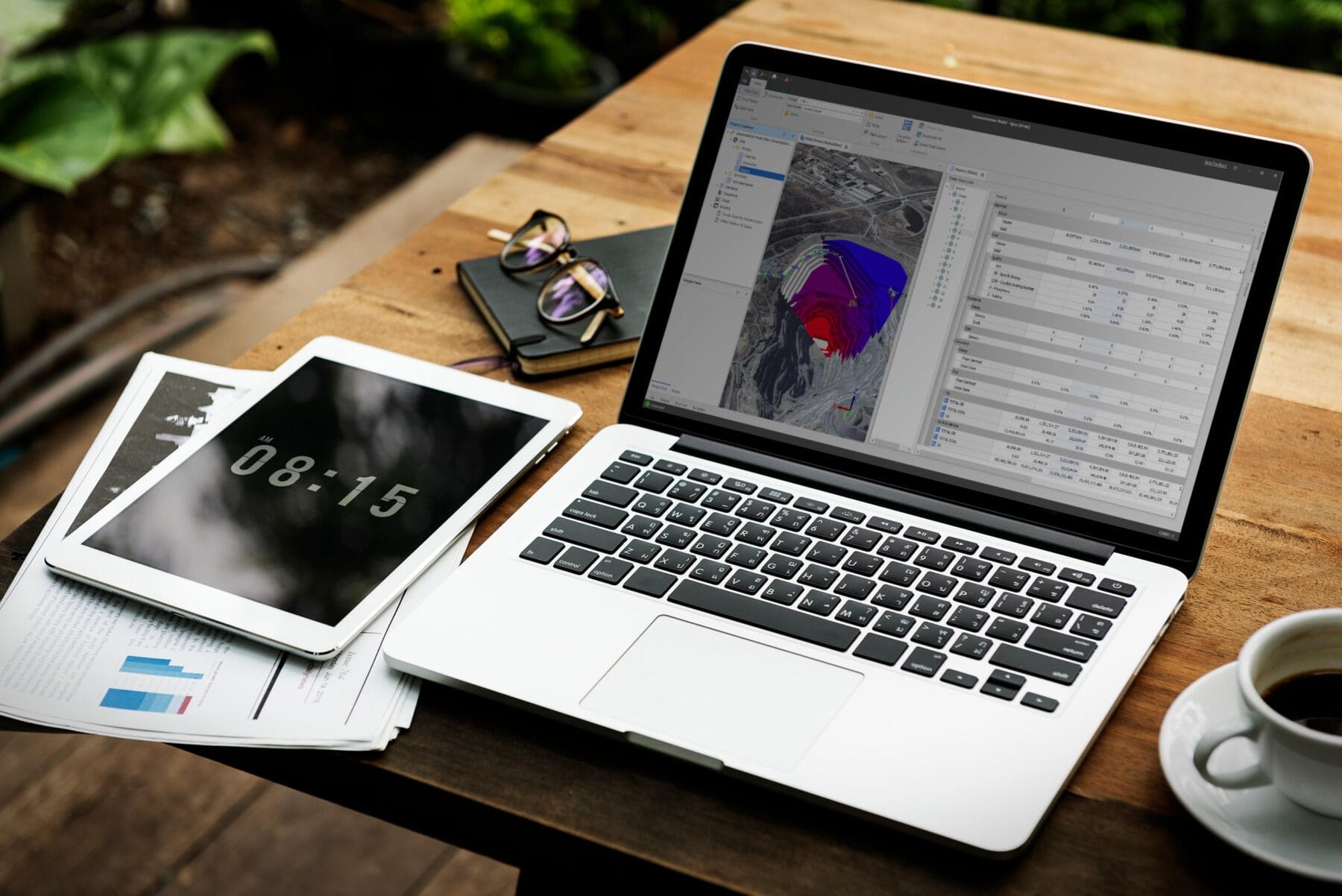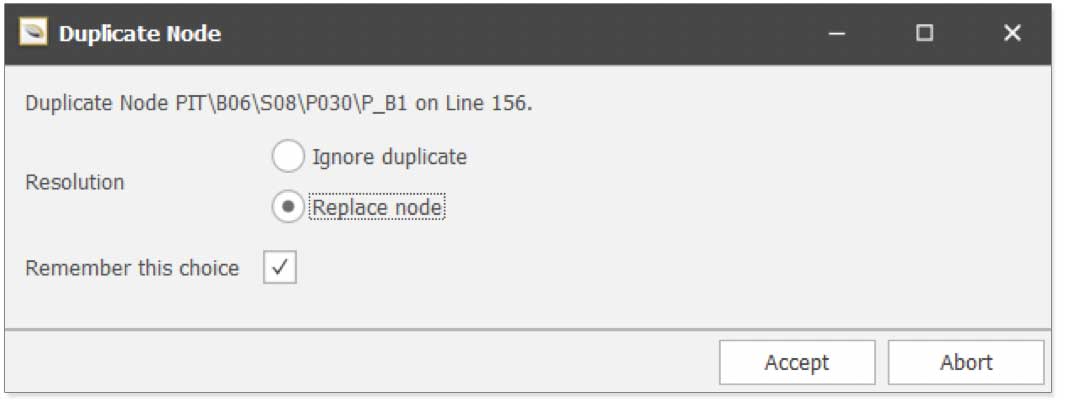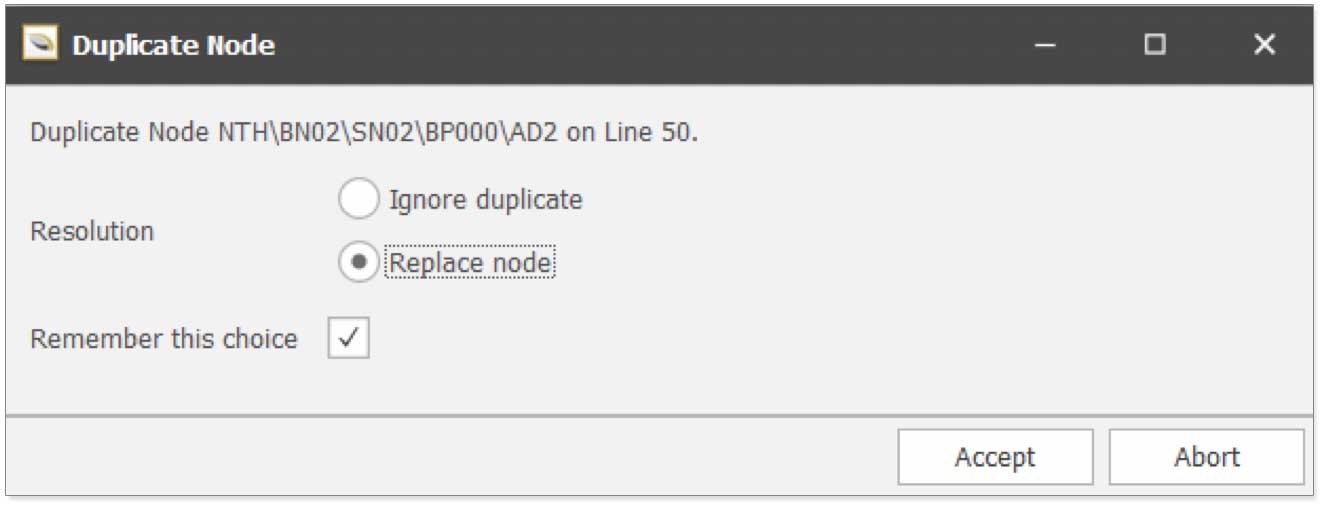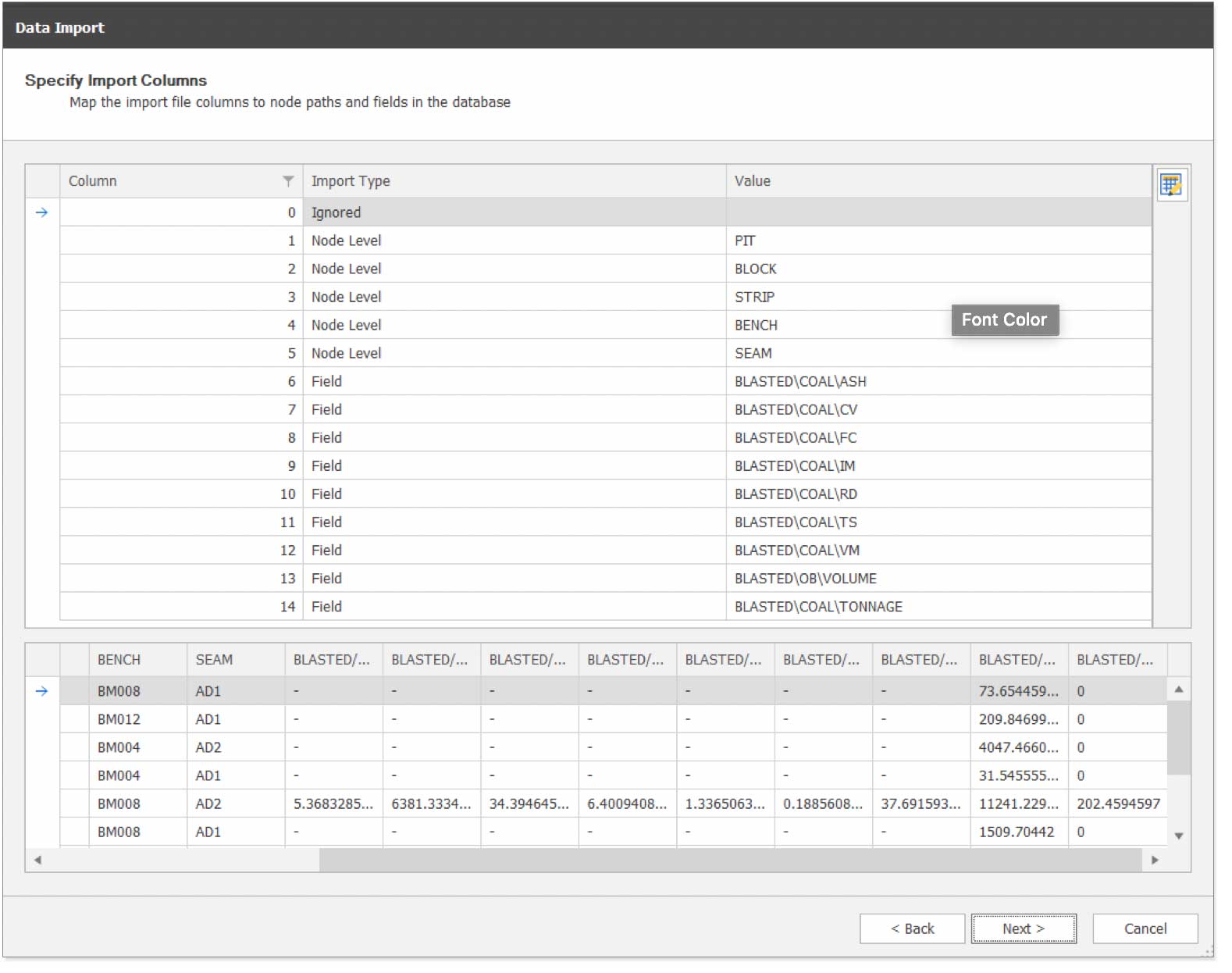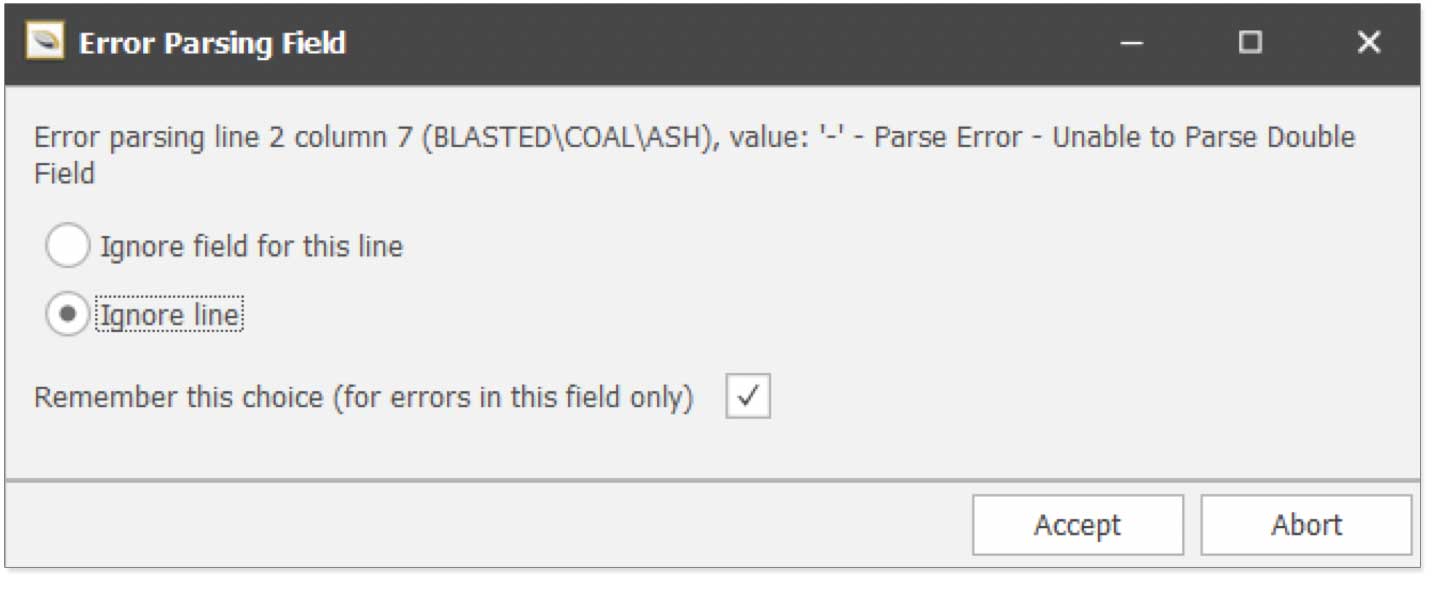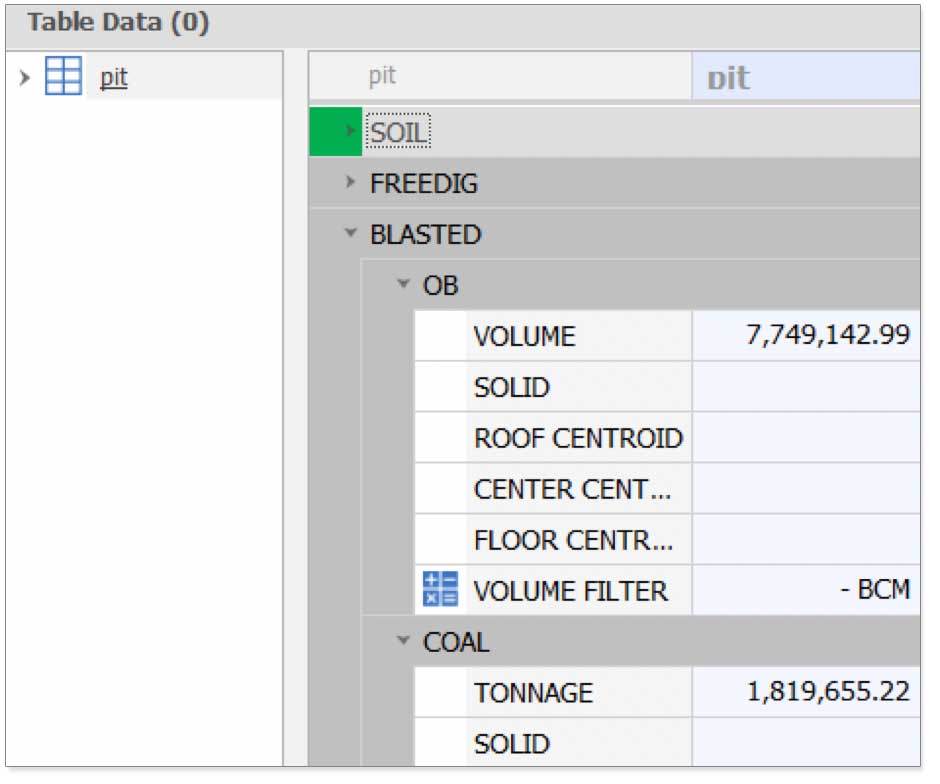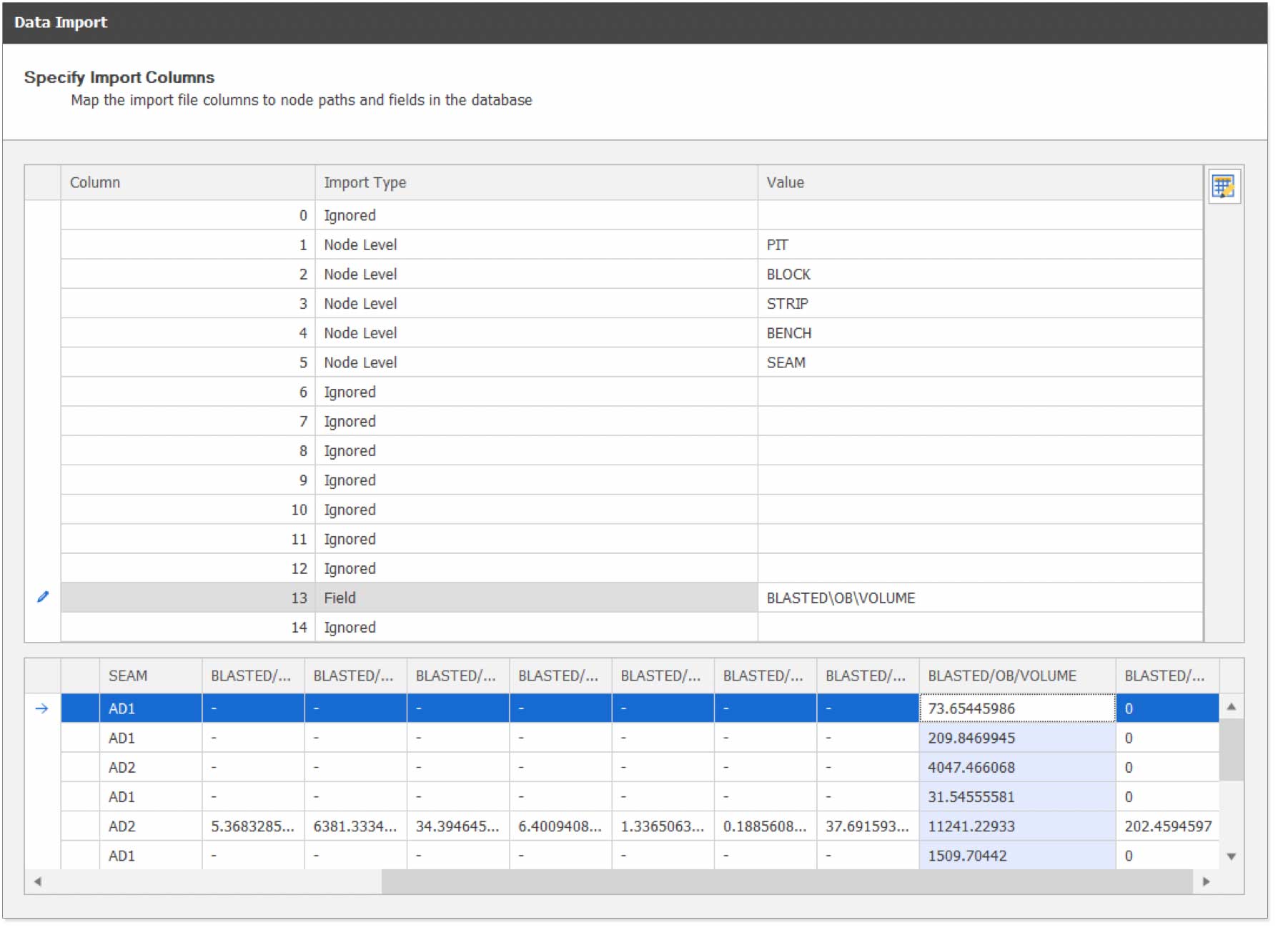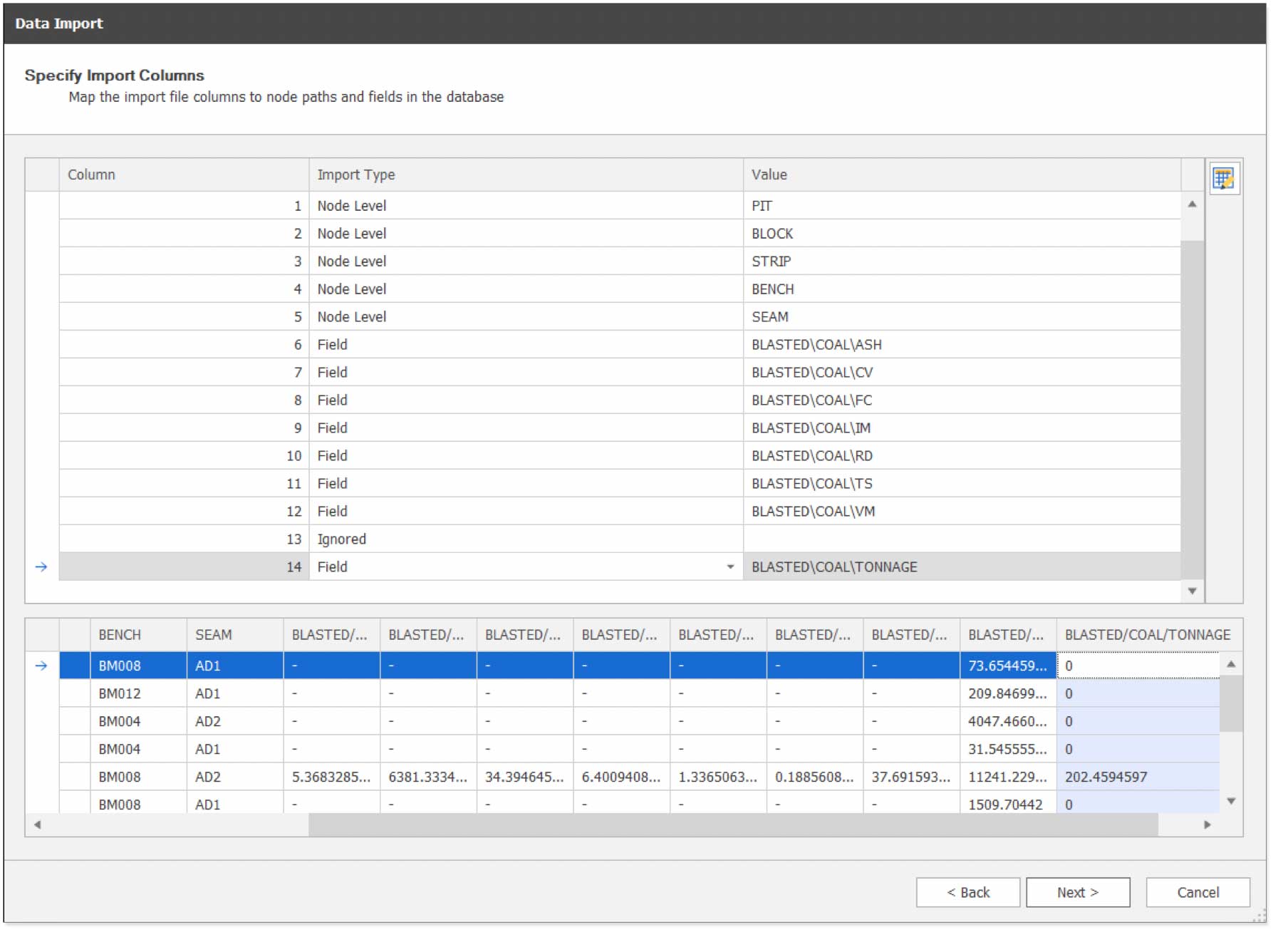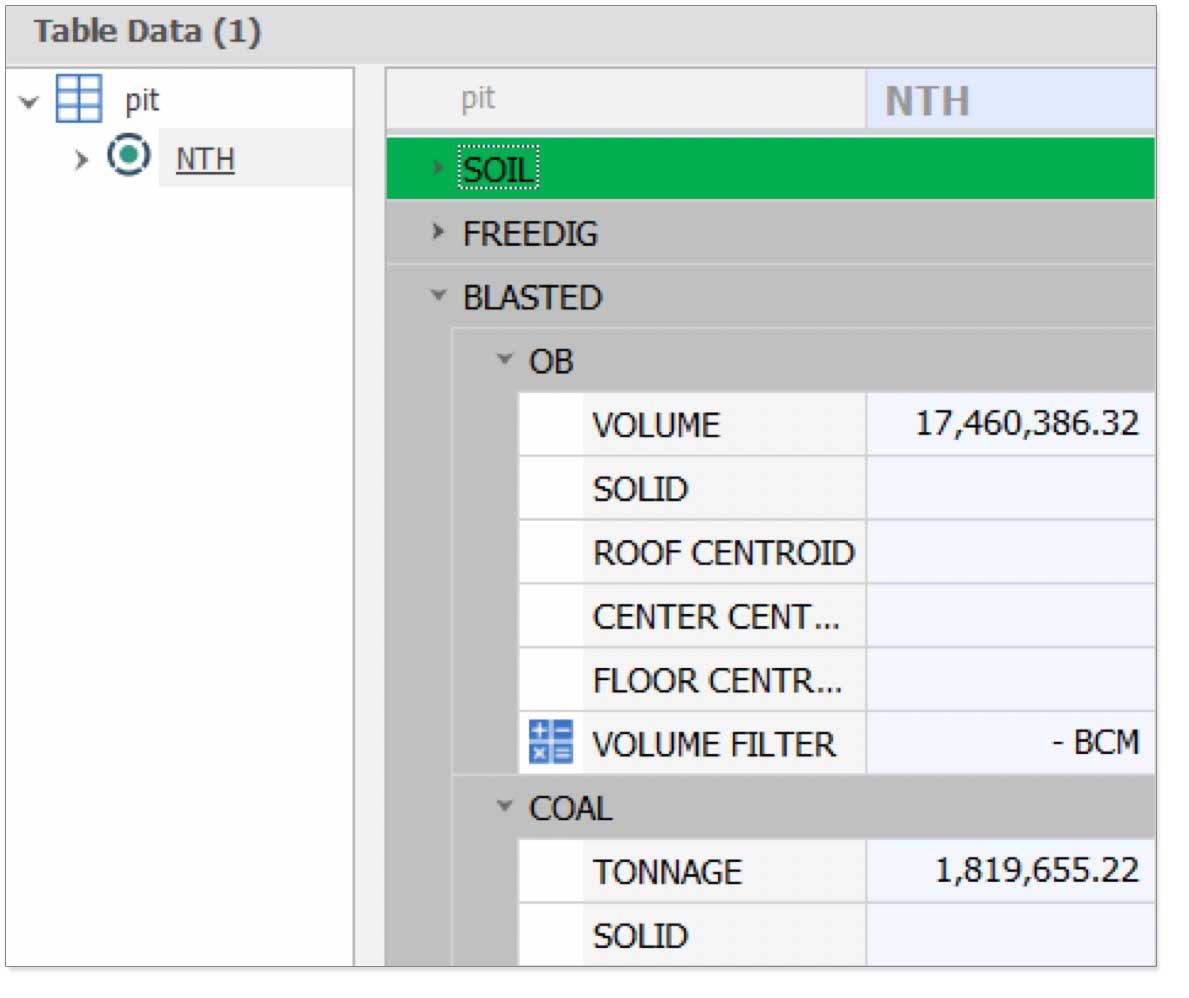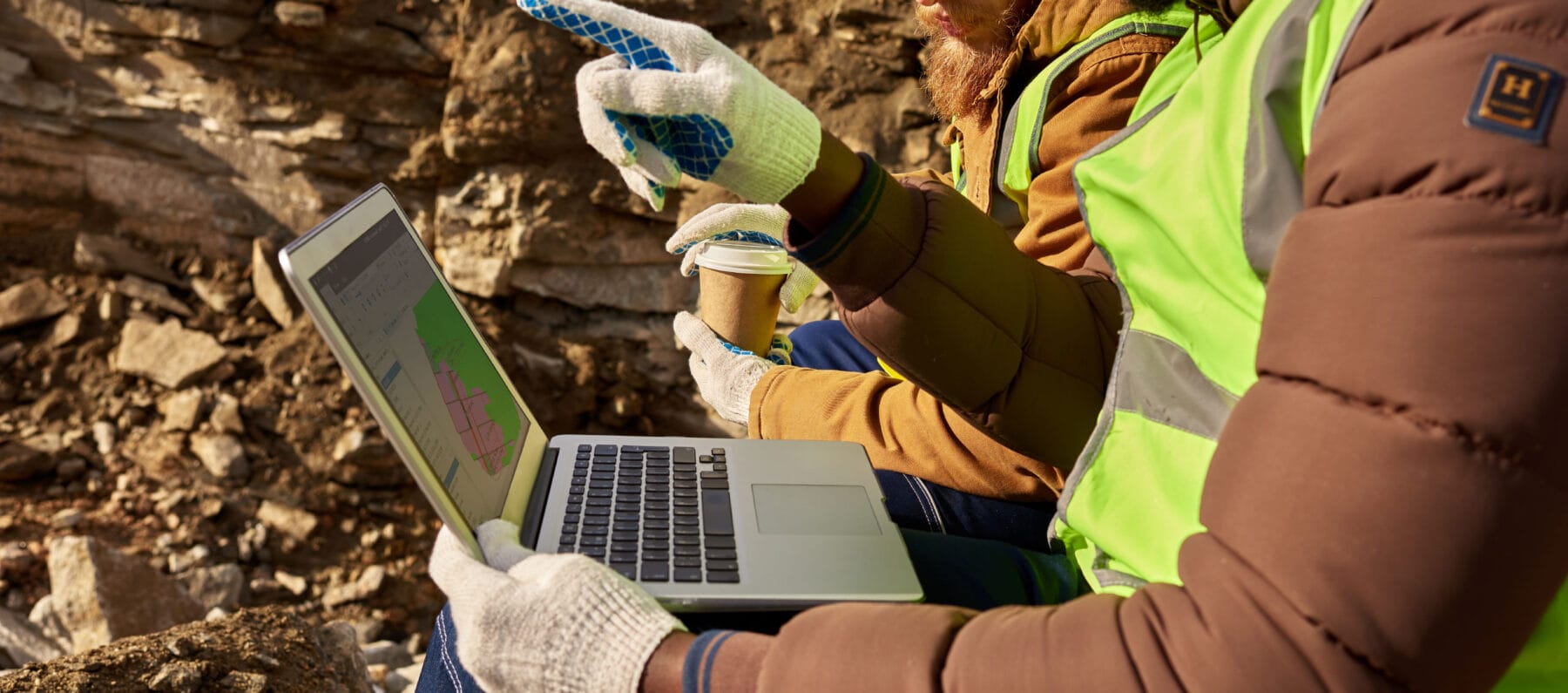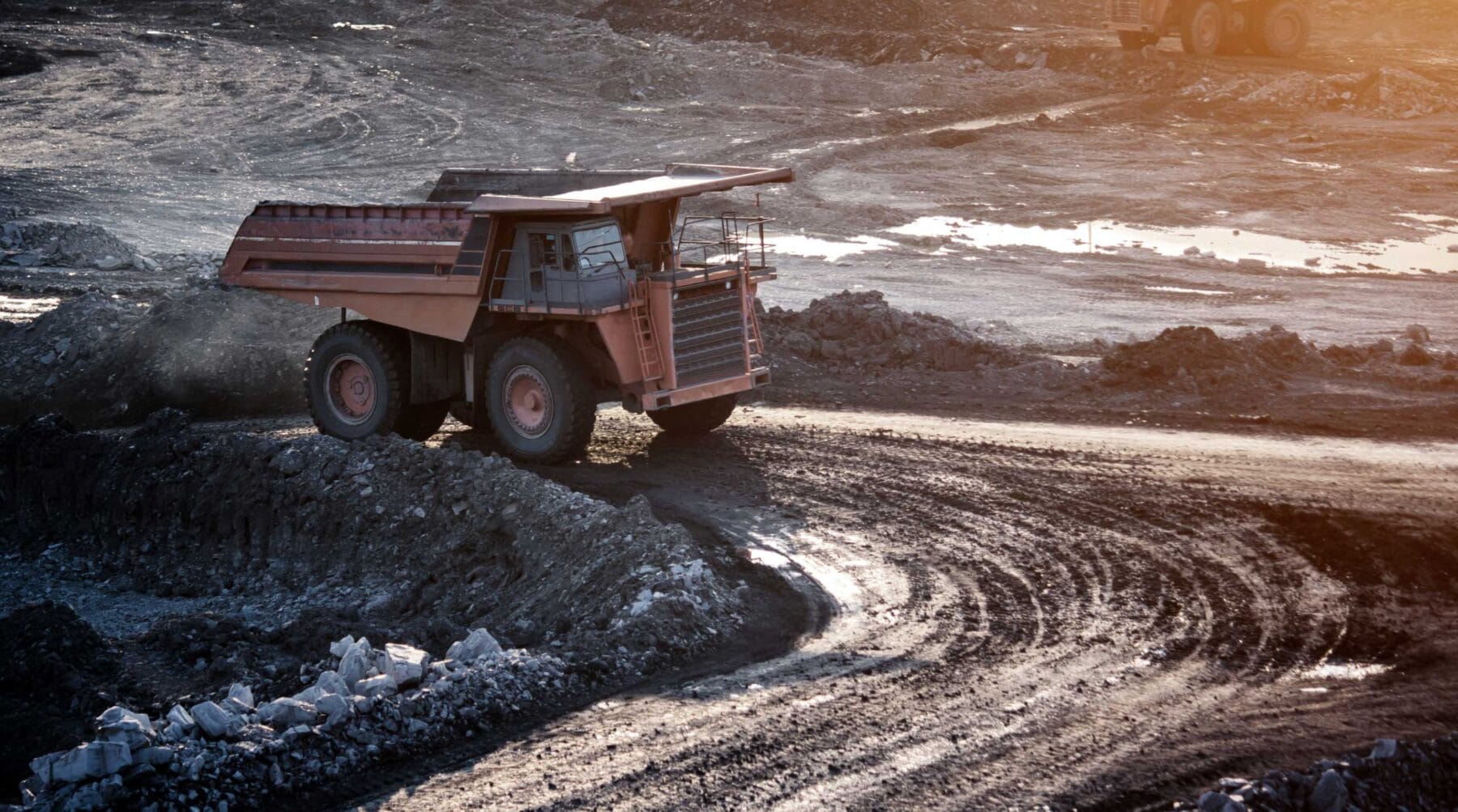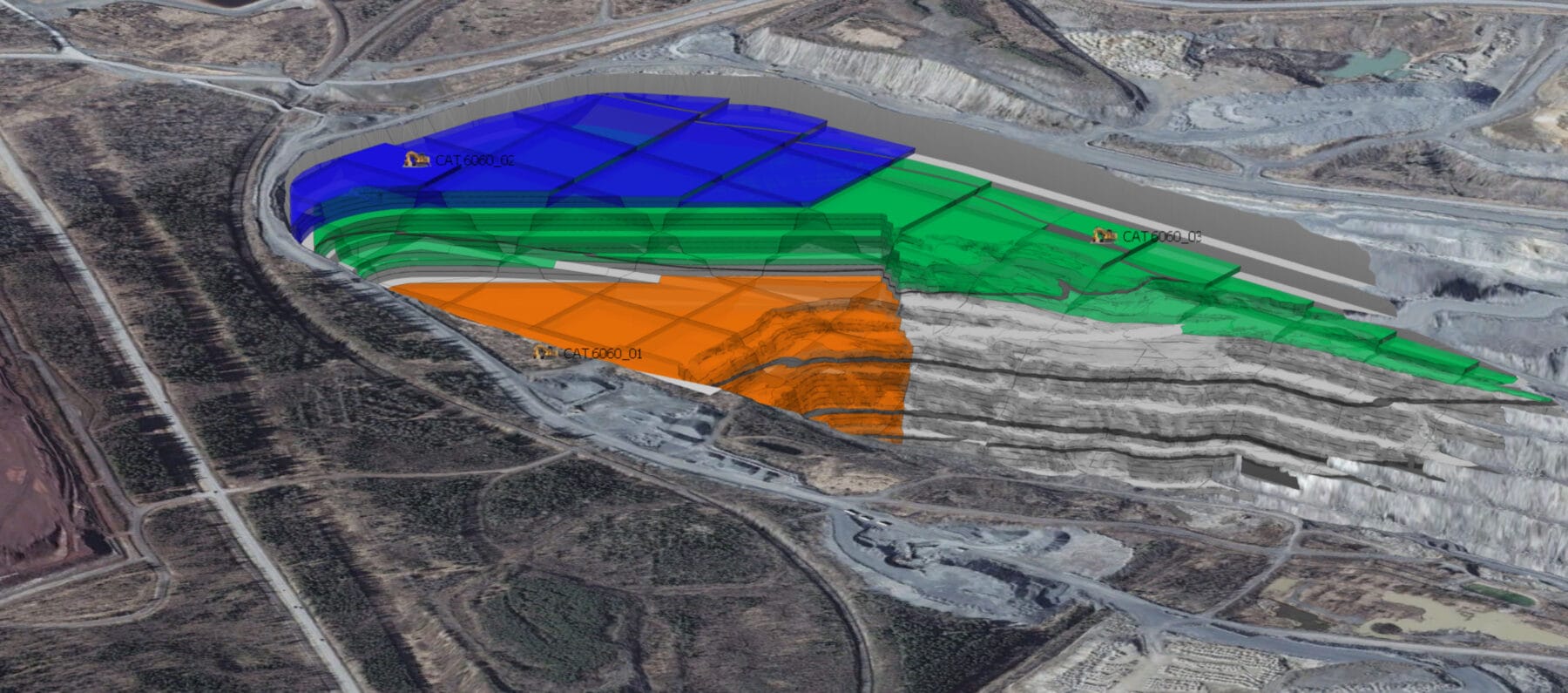So, what are things you need to prepare and check before doing the scheduling?
1. Cut & Fill option when reserving
If you calculate reserves using MineScape, make sure not to use the ‘cut & fill’ option, as this can cause duplicate nodes resulting in the accidental deletion of one of the nodes (ignore or replace). Here is an example of the difference between using and not using the cut & fill option.
- Using “cut & fill” option
- Reserve data has ‘cut’ and ‘fill’ on the same nodes
- Total reserve volume
- When importing reserve data, a duplication of nodes warning will appear
- Volume that have been successfully imported into SPRY
There are difference of around 31.000 BCM between the reserve data before and after being imported into SPRY.
- Reserve data has ‘cut’ and ‘fill’ on the same nodes
- Without the “cut & fill” option
- Reserve data only has ‘cut’.
- Total reserve volume
- Volume that have been successfully imported into SPRY
The total volume of reserve data before and after importing into SPRY is the same.
- Reserve data only has ‘cut’.
2. Merge small batter blocks
Before reserving, make sure the small batter blocks have been merged so that all of the data is read. If they are not merged, batter blocks that have the same block strip name will be considered duplicate nodes. When the data is imported to SPRY, only one data point is read and the other is ignored. Here are the differences between unmerged and merged batter blocks.
- Unmerged batter blocks
- In the sample data below, BN025N02A dan BN025N02B will be treated as duplicate nodes.
- Total reserve volume
- When importing, a warning will appear because there are duplicate nodes from the batter blocks that have not been merged.
- Volume that have been successfully imported into SPRY
There is a difference of around 24.000 BCM, between the reserve data before and after being imported into SPRY.
- In the sample data below, BN025N02A dan BN025N02B will be treated as duplicate nodes.
- Merge batter blocks
- There are no duplicate nodes because the batter block has been merged
- Total reserve volume
- Volume that have been successfully imported into SPRY
There is no volume difference between the reserve data before and after being imported into SPRY.
- There are no duplicate nodes because the batter block has been merged
3. Import reserve data
On the reserve results, non-coal materials do not have a quality value, so the value of the quality column is ‘-‘. The value ‘-‘ when imported into SPRY will potentially be skipped or ignored so that the volume will not be imported.
Here is an example of data that will be imported, where the quality value of the non-coal material is ‘-‘ with an OB volume of 17.4 million BCM and coal of 1.8 million TON.
- Reserve coal and non-coal are imported simultaneously
When carrying out simultaneous imports of coal and non-coal materials, not all of the non-coal volumes will be imported.- Mapping import column
- When importing, a warning will appear because there is a ‘-‘ value so it can’t be imported and the field will be ignored.
- Volume that have been successfully imported into SPRY
There is a non-coal volume difference of around 10 million BCM, between the reserve data before and after being imported into SPRY.
- Mapping import column
- Coal and non-coal reserves are imported separately
- Mapping import non-coal column
- Mapping import coal column
- Volume that have been successfully imported into SPRY.
The volume of reserve data before and after importing into SPRY is the same.
- Mapping import non-coal column


